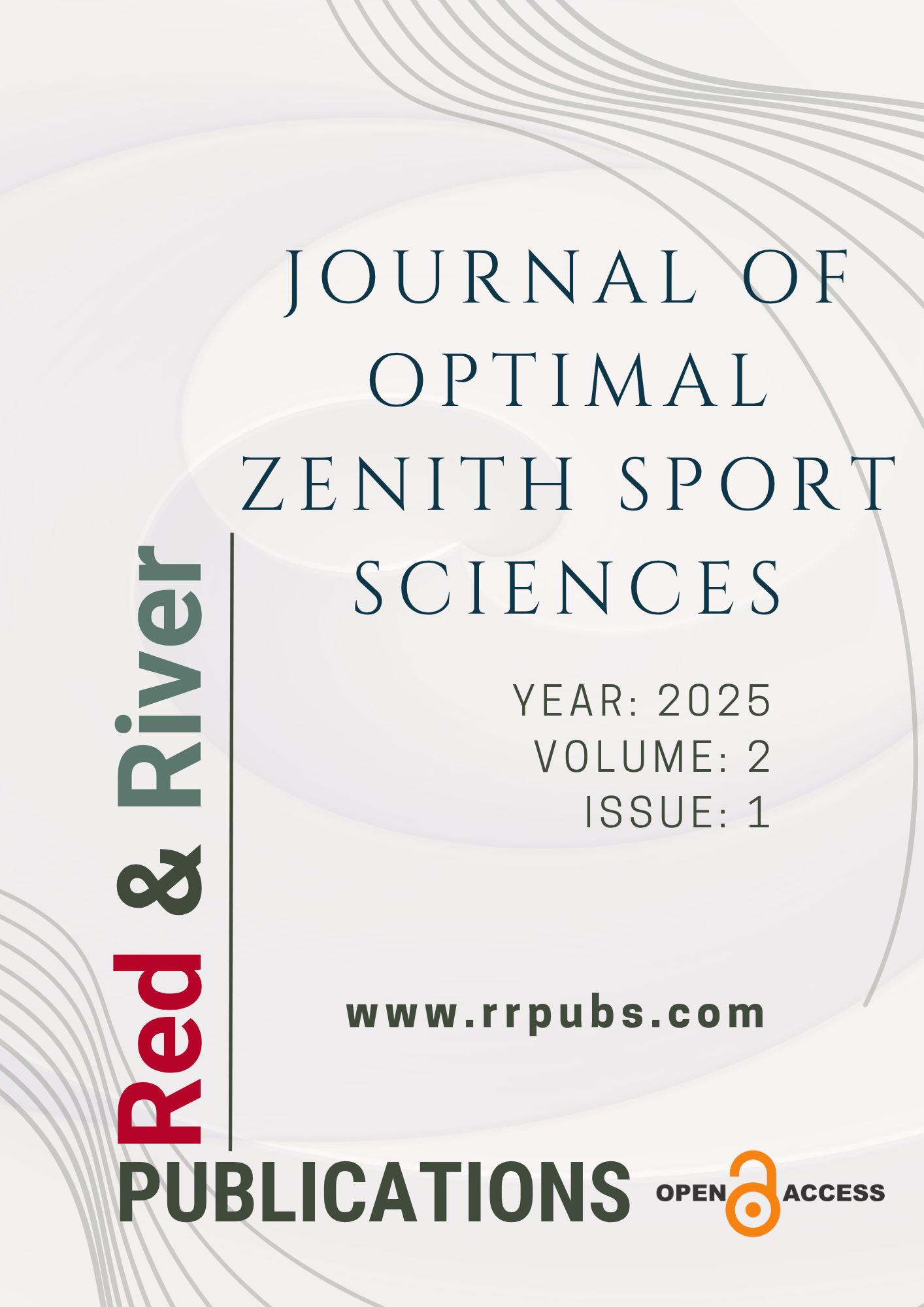An Examination of Career Adaptability Skills Among Faculty of Sport Sciences Students
DOI:
https://doi.org/10.70736/jozss.2014Keywords:
Career, adaptation, studentAbstract
The aim of this study is to determine the career adaptability skills of university students and to examine whether these skills differ according to socio-demographic variables such as gender, class level, academic department, and income level. The population of the research consists of students studying at the Faculty of Sport Sciences at Ondokuz Mayıs University, and the sample comprises 170 students selected from this population through a random sampling method. Data were collected using a personal information form and the Career Adapt-Abilities Scale – Short Form (CAAS-SF), originally developed by Savickas and Porfeli (2012), adapted into Turkish by Işık et al. (2018), and consisting of four sub-dimensions: concern, control, curiosity, and confidence. To analyze the data, normality assumptions were tested using Kolmogorov-Smirnov and Shapiro-Wilk tests. Differences between two groups were analyzed using Student’s t-test, while differences among three or more groups were analyzed using One-Way ANOVA and Tukey’s post-hoc test. According to the results, female students scored significantly higher in career adaptability than male students, while no significant differences were found based on class level, academic department, or income level. In this context, it is recommended that guidance and counseling programs aimed at improving career adaptability be designed in a way that specifically enhances awareness and skill levels among male students.
References
Arıkan, E. E., Özgenel, M., ERDEM, S. S., & Ünal, H. (2023). Developing a Mathematical Curiosity Scale for Adolescents: Validity and Reliability Study. Research on Education and Psychology. https://doi.org/10.54535/rep.1283004
Dhinepuji, D. P., & Hamdan, S. R. (2024). Studi Mengenai Adaptabilitas Karir Mahasiswa. https://doi.org/10.29313/bcsps.v4i1.9934
Erwin, E. A., & Kelleher, K. J. (2022). Understanding the Highs and Lows of Socioeconomic Status. The Journal of Allergy and Clinical Immunology, 149(5), 1585–1586. https://doi.org/10.1016/j.jaci.2022.03.007
Guo, S. (1995). Sex Differences in Personality: A Meta-Analysis Based on “Big Five” Factors. https://eric.ed.gov/?id=ED383759
Hlaďo, P., Lazarová, B., & Hloušková, L. (2019). Career Adaptability Of Vocational Education And Training Graduates İn The Period Of Prospective School-To-Work Transition. Studia Paedagogica, 24(2), 59–83. https://doi.org/10.5817/SP2019-2-3
Işık, E., Yeğin, F., Koyuncu, S., Eser, A. Çömlekciler, F. & Yıldırım, K. (2018). Validation of the Career Adapt- Abilities Scale–Short Form across different age groups in the Turkish context. International Journal for Educational and Vocational Guidance ,18(3), 297-314. https://doi.org/10.1007/s10775-018-9362-9
Karasar, N. (1999). Bilimsel Araştırma Yöntemi: Kavramlar. İlkeler, Teknikler, Ankara: Nobel Yayınevi. Maggiori, C., Rossier, J., & Savickas, M. L. (2017). Career Adapt-Abilities Scale–Short Form (CAAS-SF)
Construction And Validation. Journal Of Career Assessment, 25(2), 312-325.
Maw, W. H., & Magoon, A. J. (1971). The curiosity dimension of fifth-grade children: a factorial discriminant analysis. Child Development, 42(6), 2023–2031. https://doi.org/10.1111/J.1467-8624.1971.TB03789.X
McGillivray, S., Murayama, K., & Castel, A. D. (2015). Thirst For Knowledge: The Effects Of Curiosity And İnterest On Memory İn Younger And Older Adults. Psychology and Aging, 30(4), 835–841. https://doi.org/10.1037/A0039801
Özçakir Sümen, Ö. (2023). English İnterest And Anxiety Of Secondary School Students. European Journal Of Education Studies, 10(3). https://doi.org/10.46827/ejes.v10i3.4754
Pordelan, N., Abedi, M. R., Baghban, I., & Nilforooshan, P. (2014). Comparison of Career Adaptability in Employed and Unemployed Undergraduates of Isfahan University.
Savickas, M. L., & Porfeli, E. J. (2012). Career Adapt-Abilities Scale: Construction, Reliability, And Measurement Equivalence Across 13 Countries. Journal of Vocational Behavior, 80, 661–673. https:// doi.org/10.1016/j.jvb.2012.01.011.
Slof-Op ’t Landt, M. C. T., van Furth, E. F., Rebollo-Mesa, I., Bartels, M., van Beijsterveldt, C. E. M., Slagboom,
P. E., Boomsma, D. I., Meulenbelt, I., & Dolan, C. V. (2009). Sex Differences in Sum Scores May Be Hard to Interpret: The Importance of Measurement Invariance. Assessment, 16(4), 415–423. https://doi.org/10.1177/1073191109344827
Suryanda, A., Heryanti, E., & Khairunnisa, F. (2022). Are Self-Confidence And Curiosity İn Studying Biology Related To Achievement Motivation? Bio-Inoved : Jurnal Biologi-Inovasi Pendidikan, 4(2), 134. https://doi.org/10.20527/bino.v4i2.12576
Tosun, C. (2018). Effect of Gender on Levels of Curiosity Towards Scenarios Prepared Within The Scope of the “Matter and Change” Unit at the 5th Grade. Pamukkale University Journal of Education, 44(44), 1–14. https://doi.org/10.9779/PUJE.2018.202
Xu, J. (2008). Models of Secondary School Students’ Interest in Homework: A Multilevel Analysis. American Educational Research Journal, 45(4), 1180–1205. https://doi
Downloads
Published
Issue
Section
License
Copyright (c) 2025 Journal of Optimal Zenith Sport Science

This work is licensed under a Creative Commons Attribution 4.0 International License.

